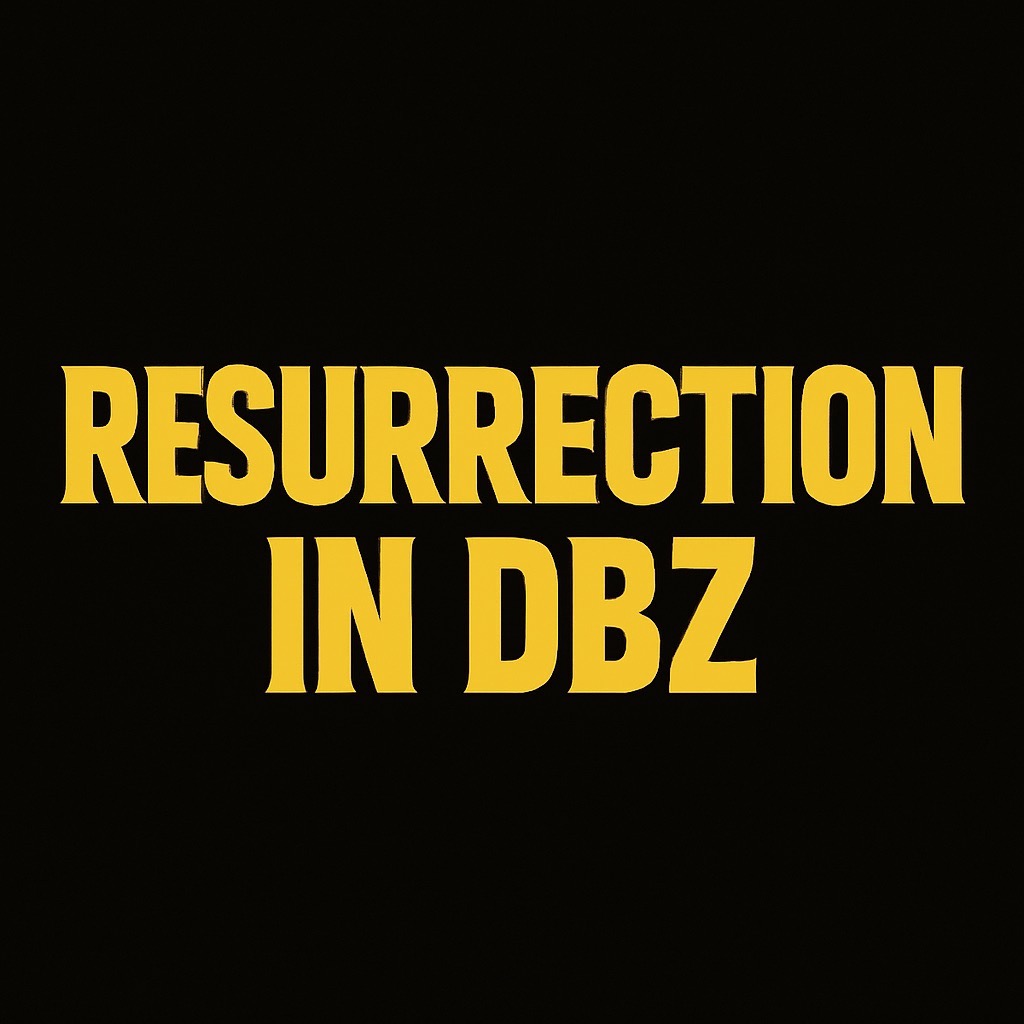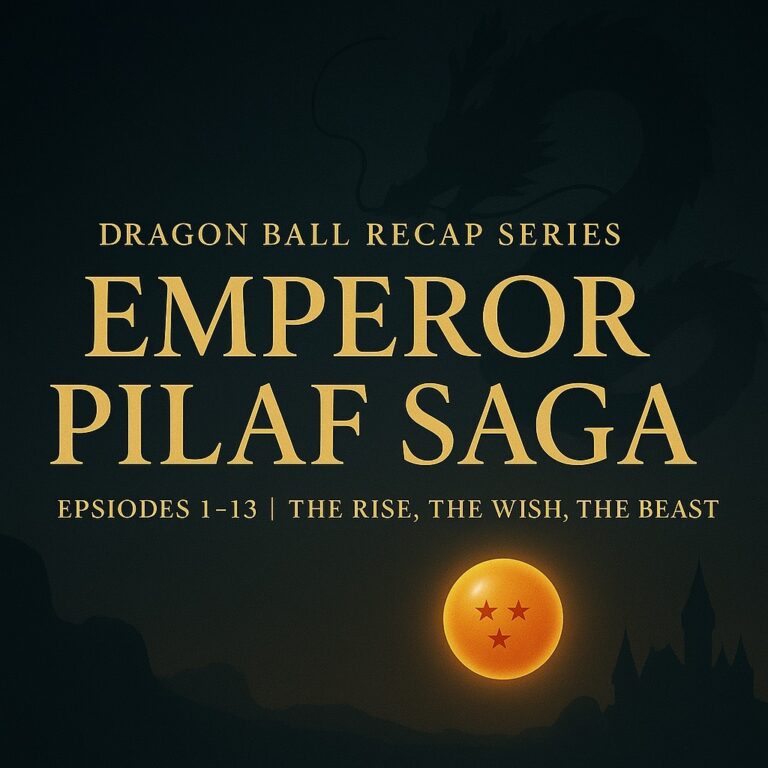Resurrection in Dragon Ball Z isn’t just a plot mechanic — it’s a recurring theme tied to hope, sacrifice, and the belief that love can conquer death.
When Goku dies and comes back, it’s more than convenience. His return is often tied to timing, training, and the protection of others. Like a messianic figure, he lays down his life for friends… and returns to finish the mission.
📖 “I am the resurrection and the life. The one who believes in me will live, even though they die.” — John 11:25
This verse captures the emotional undercurrent behind resurrection moments in DBZ. While not overtly religious, they echo something real: the idea that death isn’t final, and self-giving love leads to life.
☁️ Goku’s Deaths and Returns: A Messianic Echo
Goku dies — more than once. But it’s never meaningless.
In each case, Goku doesn’t just vanish. He gives. He lays down his life in a way that protects the people he loves. And when he returns, it’s not for glory — it’s for mission.
- In the fight against Raditz, Goku dies to save Gohan and stop a greater threat.
- He trains in the afterlife and comes back during the Saiyan invasion — more powerful, more peaceful.
- During the Cell Games, he sacrifices himself to save Earth — and stays dead by choice.
Goku’s resurrection arcs feel symbolic. Like a Christ figure, he lays down his life… and returns when hope demands it.
🎬 Watch: Goku’s Death vs. Raditz
🧬 Resurrection Isn’t Reset — It’s Renewal
In DBZ, resurrection isn’t just a rewind button. It’s part of a spiritual arc.
Characters like Piccolo, Krillin, and even Goku don’t come back unchanged. They come back with insight. With new purpose. With deeper conviction.
Even Vegeta — who doesn’t literally die in every case — experiences rebirth. His pride dies. His heart softens. His legacy is rewritten.
This is a biblical principle: resurrection isn’t about going back to normal — it’s about becoming something new.
📖 “Therefore, if anyone is in Christ, the new creation has come: The old has gone, the new is here!” — 2 Corinthians 5:17
🛡️ Sacrifice First, Resurrection Later
The pattern is consistent:
- Sacrifice.
- Death (literal or symbolic).
- Return stronger — not just in power, but in wisdom and purpose.
This reflects the heart of the gospel:
“Greater love has no one than this: to lay down one’s life for one’s friends.” — John 15:13
In DBZ, the most meaningful returns follow acts of selflessness.
- Goku dies for Earth. Returns to teach.
- Piccolo dies for Gohan. Returns to lead.
- Even future Trunks loses everything — and returns with a warning that saves the timeline.
DBZ reminds us: real resurrection follows real sacrifice.
🎬 Watch: Piccolo Sacrifices Himself for Gohan
🌀 John 11:25 and the Hope That Follows Death
“I am the resurrection and the life. The one who believes in me will live, even though they die.” — John 11:25
This is one of the boldest claims in the Bible — and it’s not metaphorical. Jesus isn’t saying we’ll be remembered. He’s saying death isn’t the end.
In DBZ, death is rarely final. But it’s never weightless. The series dramatizes something true: when someone gives their life in love, that love has the power to resurrect.
Resurrection in scripture is not just a happy ending — it’s the beginning of new creation. In DBZ, the world is often saved not by brute strength, but by the willingness to die so that others might live.
This is the gospel echo.
🎬 Watch: Goku’s Final Sacrifice During Cell Games
🌍 Resurrection, Rebirth, and the World Saved Again
The Dragon Balls themselves are resurrection devices — seven scattered promises that say: death can be undone, and hope can be restored.
But their use is always limited. The story never lets resurrection feel cheap. Instead, it elevates it as sacred — bought with courage, sacrifice, and unity.
Resurrection in DBZ, and in the Bible, points to this truth:
- Death isn’t the end.
- Love has authority over the grave.
- Sacrifice leads to something new.
📚 Related Reading
🪦 Historical Evidence of Jesus
Explore the real-world resurrection claims that shaped history — and why they still offer hope.
🧬 Was Jesus a Madman?
A deep dive into the sanity and boldness of the one who claimed to conquer death.
💥 Goku Sacrifice Meaning: Gospel Parallels in Dragon Ball Z
Goku’s ultimate moment mirrors a greater truth: power laid down in love.
🔥 Vegeta Redemption Meaning: Prodigal Pride and Sacrifice
Vegeta’s rebirth wasn’t from death — but from ego. A powerful story of inner resurrection.
❓FAQ: Resurrection Symbolism in DBZ and the Bible
Is resurrection in DBZ just a plot device?
No. While used for pacing and tension, it consistently echoes deeper spiritual ideas — sacrifice, rebirth, and the value of life.
How is Goku’s return like Jesus’?
Both involve voluntary sacrifice and triumphant return for the sake of others. Goku doesn’t return for power. He returns for peace.
Does the Bible really teach literal resurrection?
Yes. John 11:25 and 1 Corinthians 15 both affirm bodily resurrection as a core Christian hope.
Why does resurrection matter so much in stories?
Because we’re all afraid of death. Resurrection stories, like those in DBZ or the gospels, say death doesn’t get the last word.
Who else in DBZ mirrors biblical resurrection?
Piccolo (sacrificing for Gohan), Trunks (returning to warn), and even Vegeta (symbolic rebirth through humility).
What’s the takeaway?
In DBZ and in Scripture, the pattern is clear: Love lays down its life… and rises again with purpose.
🔗 Want to go deeper?
Explore how resurrection isn’t just hope — it’s history. And it’s echoed in every life laid down for love.
👉 Historical Evidence of Jesus




